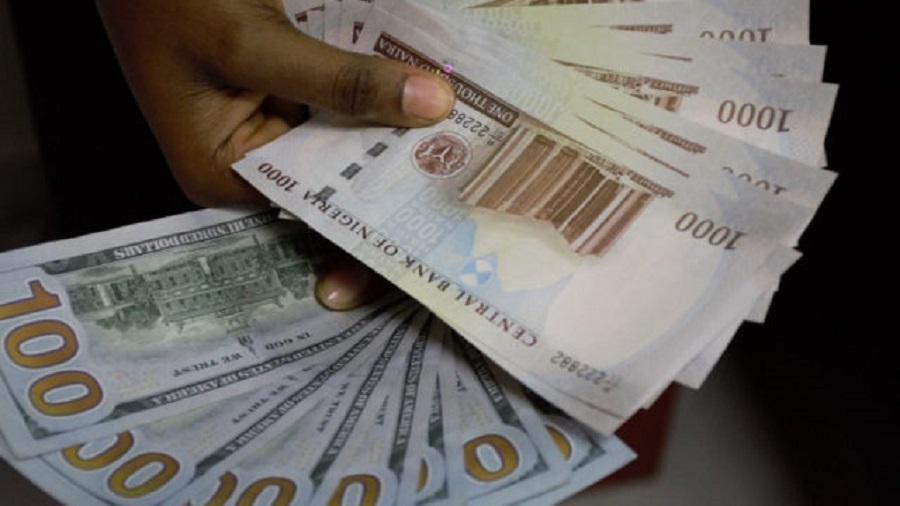The exchange rate at the black market where forex traded unofficially depreciated at N477/$1.
On January 22, 2021, the exchange rate between the naira and the dollar depreciated closing at N394.17/$1 at the NAFEX (I&E Window) where forex is traded officially.
Forex turnover, however, dropped by about 42.2% as pressure on the foreign exchange market continues.
The Central Bank of Nigeria (CBN) in a new circular, read the riot act to the International Money Transfer Operators (IMTOs) as they have threatened to sanction some of them who still facilitate diaspora remittances in naira, contrary to its earlier directive that it must be in foreign currency.
Also, the exchange rate at the black market where forex traded unofficially depreciated at N477/$1. The exchange rate at the parallel market closed at N475/$1 on the previous trading day of January 21, 2021, representing a N2 drop.
The exchange rate disparity between the parallel market and the official market is about N82.83, representing a 17.36% devaluation differential.
The Naira depreciated against the dollar at the Investors and Exporters (I&E) window on Friday, closing at N394.17/$1. This represents a 17 kobo drop when compared to the N394/$1 that it closed on the previous trading day.
- The opening indicative rate was N393.15 to a dollar on Friday, this represents a N1.01 gain when compared with the N394.16 to a dollar that was recorded on Thursday, January 21, 2021.
- The N395 to a dollar was the highest rate during intra-day trading before it closed at N394.17 to a dollar. It also sold for as low as N390/$1 during intra-day trading.
- Forex turnover at the Investor and Exporters (I&E) window dropped by 42.2% on Friday, January 22, 2021.
- According to the data tracked by Nairametrics from FMDQ, forex turnover declined from $77.04 million on Thursday, January 21, 2021, to $44.51 million on Friday, January 22, 2021.
- The exchange rate is still being affected by low oil prices, dollar scarcity, a backlog of forex demand, and a shaky economy that has been hit by the coronavirus pandemic.
- There are fears that the exchange rate at the black market might be under pressure in the coming weeks as importers scramble for dollars to meet their demands.
Oil price steady rise
Brent crude oil price is at about $55.34 per barrel as of Monday morning, as it moves towards the $60 mark, a strong sign that global demand could sustain price increases in 2021.
- This appears as a boost to Nigeria as the country’s crude oil price benchmark for 2020 was $40 while it projected an oil production output of 1.8 million barrels per day.
- Nigeria has a production capacity of 2.5 million barrels per day but is subject to OPEC’s crude oil production cuts, which are expected to help sustain higher oil prices.
- The higher oil prices and steady production output have positively impacted Nigeria’s external reserves, rising sharply to $36.304 million according to central bank data dated January 14, 2020.
- This is the highest level since July 2020 and a sign that higher oil prices and steady output levels may be contributing significantly to Nigeria’s foreign exchange position.
Nigeria rising external reserves
- The external reserve has risen to $36.508 billion as of January 21, 2021.
- Nairametrics had earlier reported that the government may have taken receipt of the $1-1.5 billion World Bank loan.
- The external reserves have increased by $1.135 billion since December 31, 2020, when it closed the year at $35.3 billion.
- Nigeria also needs the external reserves to hit $40 billion if it is to adequately meet some of the pent up demand that has piled up since 2020 when oil prices crashed and the pandemic caused major economic lockdowns.





No comments :
Post a Comment